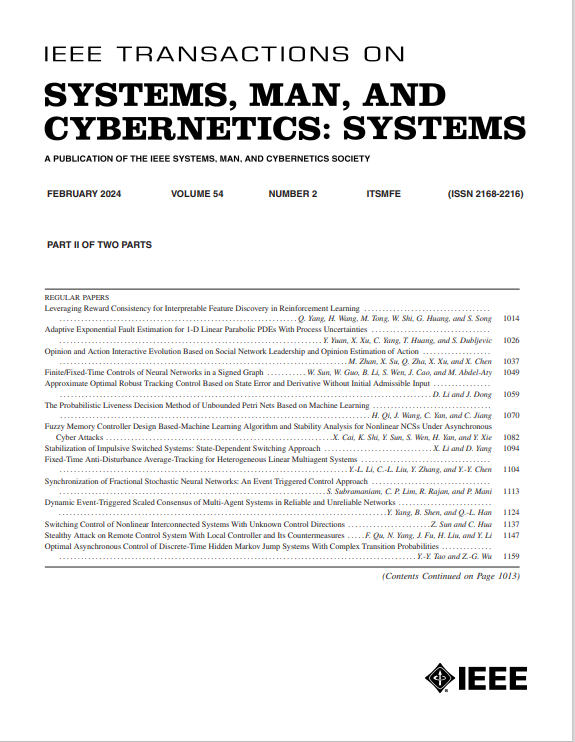Workload Balancing for Photolithography Machines in Semiconductor Manufacturing via Estimation of Distribution Algorithm Integrating Kmeans Clustering
IF 8.6
1区 计算机科学
Q1 AUTOMATION & CONTROL SYSTEMS
IEEE Transactions on Systems Man Cybernetics-Systems
Pub Date : 2025-06-04
DOI:10.1109/TSMC.2025.3572370
引用次数: 0
Abstract
This work focuses on the scheduling of a photolithography area with multiple machine groups and each one consists of a predetermined number of photolithography machines (PMs). PMs belonging to the same machine group should have identical processing capacities. Additionally, all PMs are designated with downward processing compatibility. This means that the wafers requiring relatively low pattern precision can be processed by the PMs used to deal with high pattern precision. After executing a photolithography process, a circuit pattern is transferred from an auxiliary resource called a reticle onto the wafer surface. Moreover, when processing wafers with different reticle and processing environment requirements, the machine setup is necessary. With those complex processing requirements, the objective is to minimize the difference between the longest and shortest working time of PMs so as to balance the workloads among all PMs. To do so, a mixed-integer linear programming model is built and then solved by using CPLEX for the small-sized problem. For medium- and large-sized problems, a designed estimation of distribution algorithm integrating a Kmeans clustering is constructed to improve the productivity of the photolithography area. Comparison results show that the proposed method outperforms the compared algorithms regardless of problem sizes.基于Kmeans聚类估计分布算法的半导体制造光刻机工作负载均衡
本工作的重点是一个有多个机群的光刻区域的调度,每个机群由预定数量的光刻机(pm)组成。属于同一机床组的pm应具有相同的加工能力。此外,所有pm都具有向下加工兼容性。这意味着对图案精度要求相对较低的晶圆可以由用于处理高图案精度的pm来处理。在执行光刻工艺后,电路图案从称为光栅的辅助资源转移到晶圆表面上。此外,在加工不同光圈和加工环境要求的晶圆时,机器设置是必要的。在这些复杂的加工需求下,目标是最小化pm最长和最短工作时间之间的差异,从而平衡所有pm之间的工作负载。为此,建立了一个混合整数线性规划模型,并利用CPLEX对小尺度问题进行求解。针对大中型问题,设计了一种集成Kmeans聚类的分布估计算法,提高了光刻领域的生产率。对比结果表明,无论问题大小如何,所提方法都优于所比较的算法。
本文章由计算机程序翻译,如有差异,请以英文原文为准。
求助全文
约1分钟内获得全文
求助全文
来源期刊

IEEE Transactions on Systems Man Cybernetics-Systems
AUTOMATION & CONTROL SYSTEMS-COMPUTER SCIENCE, CYBERNETICS
CiteScore
18.50
自引率
11.50%
发文量
812
审稿时长
6 months
期刊介绍:
The IEEE Transactions on Systems, Man, and Cybernetics: Systems encompasses the fields of systems engineering, covering issue formulation, analysis, and modeling throughout the systems engineering lifecycle phases. It addresses decision-making, issue interpretation, systems management, processes, and various methods such as optimization, modeling, and simulation in the development and deployment of large systems.
 求助内容:
求助内容: 应助结果提醒方式:
应助结果提醒方式:


